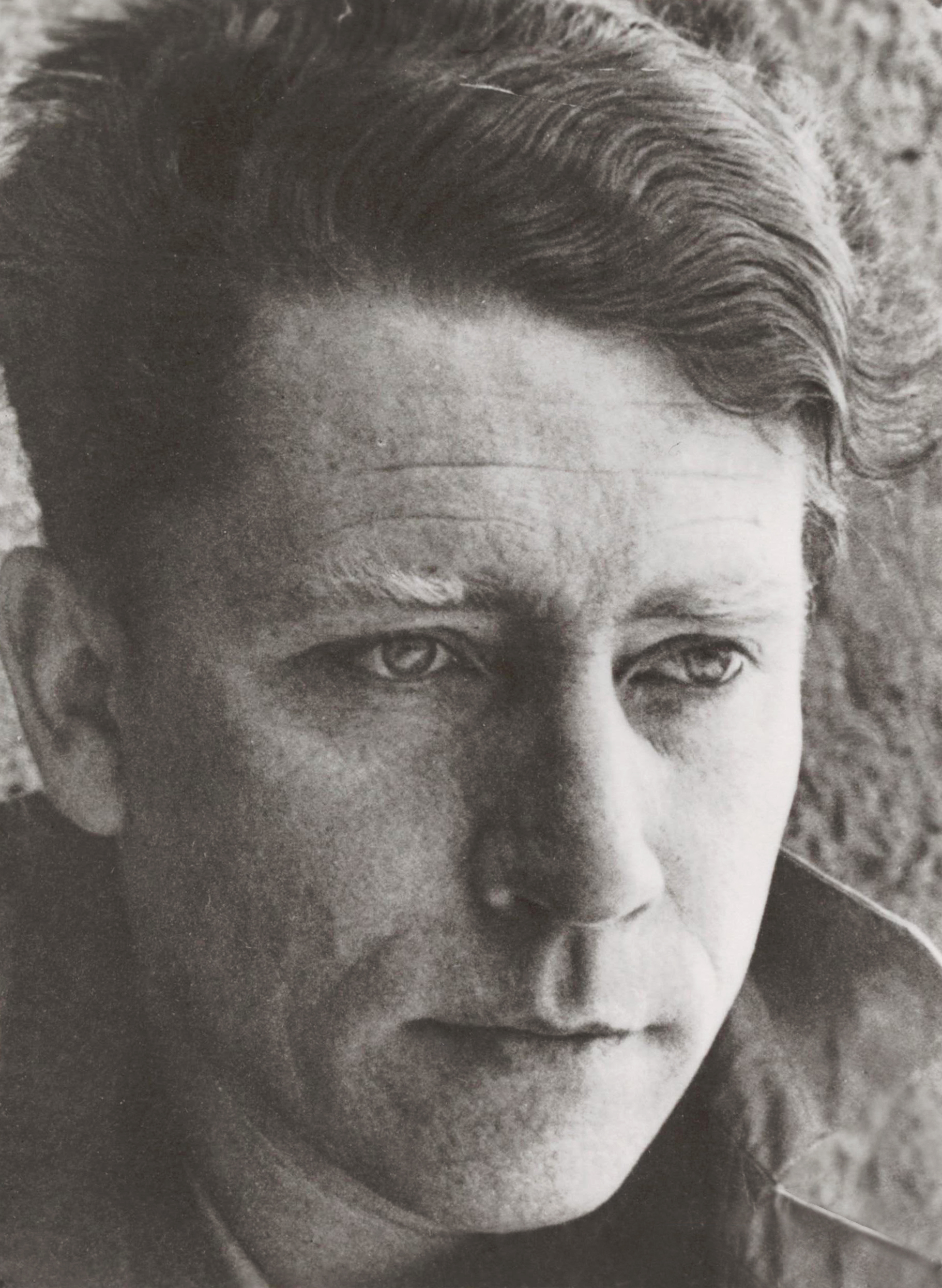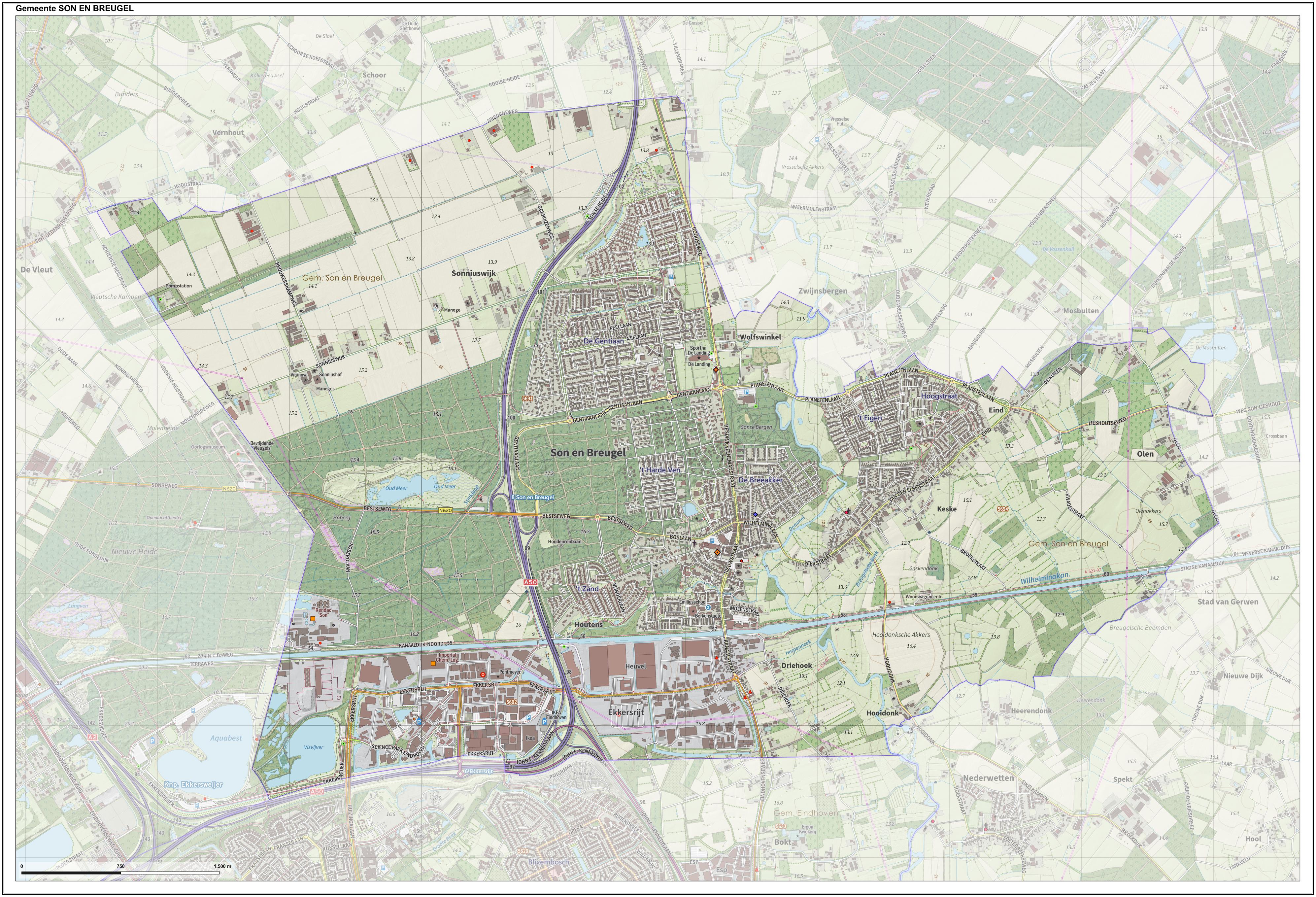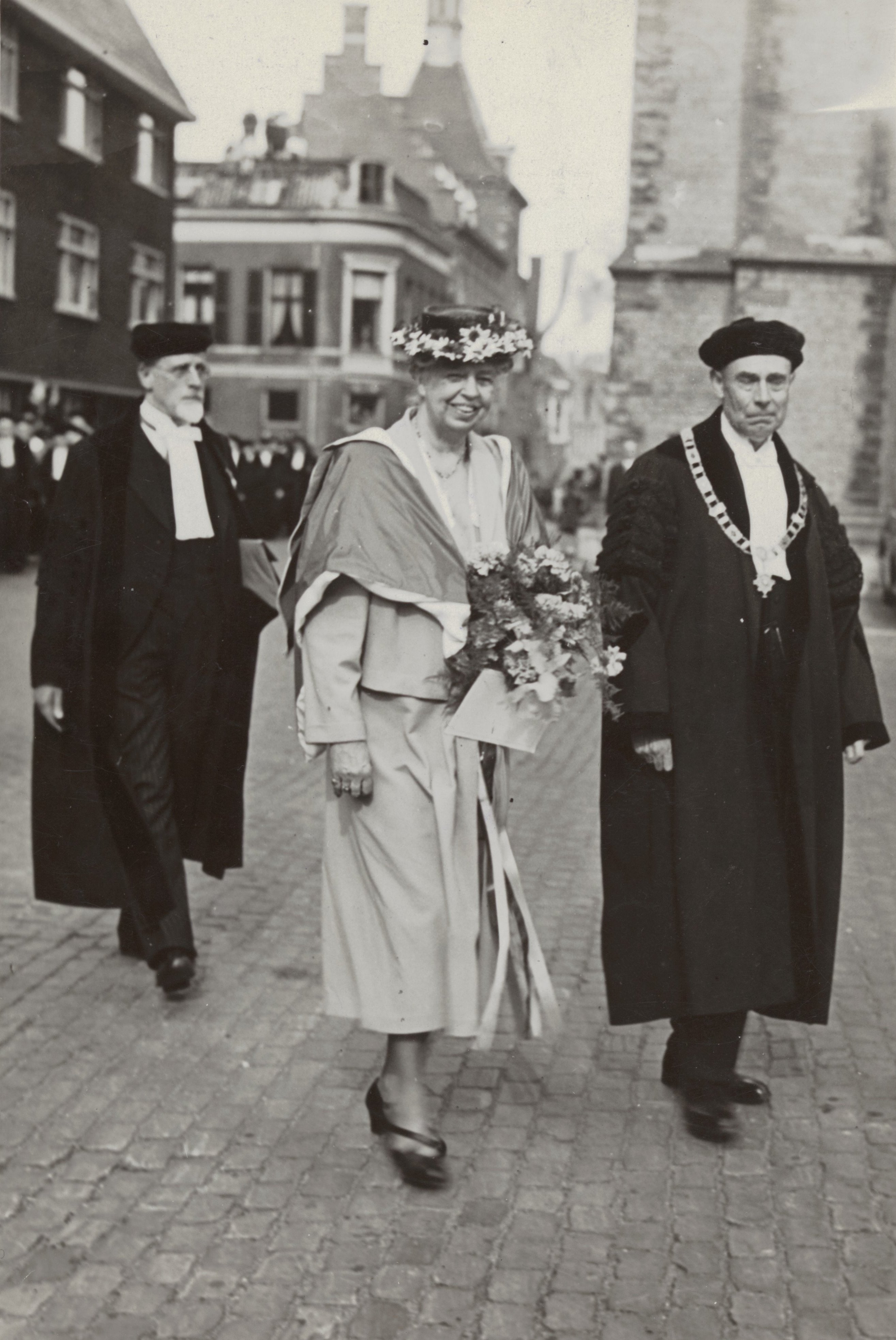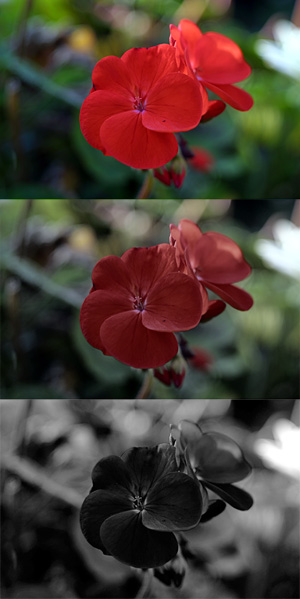|
Arie Andries Kruithof
Arie Andries Kruithof (1909, Zeist (NL) – 1993, Son en Breugel (NL)) was a Dutch professor of applied physics at Eindhoven University of Technology (Netherlands). Kruithof studied physics at Utrecht University, where he obtained a doctor’s degree from Leonard Ornstein in 1934.PhD dissertation at Utrecht University: (under Leonard Ornstein) At Philips, he did research on lighting systems, especially gas-discharge lamps. Later he was appointed professor of applied physics at Eindhoven University of Technology, leading the Atomic Physics group, mainly researching gas discharges and Plasma (physics), plasmas. The Kruithof curve, describing the influence of Color temperature, colour temperature on visual perception, is named after him. References External links * {{DEFAULTSORT:Kruithof, Arie Andries 1909 births 1993 deaths 20th-century Dutch physicists Utrecht University alumni Academic staff of the Eindhoven University of Technology People from Zeist ... [...More Info...] [...Related Items...] OR: [Wikipedia] [Google] [Baidu] |
Zeist
Zeist () is the capital and largest town of the municipality of Zeist. The town is located in the Utrecht province of the Netherlands, east of the city of Utrecht. History The town of "Seist" was first mentioned in a charter in the year 838. The original settlement was located at the present ''Dorpsstraat''. In the late 12th century, a church was built here. Its tower is now a part of the Reformed Church, the remainder of which was built in the 19th century. Until medieval times, a branch of the river Rhine flowed close to the centre of the town. Three mansions were built near the village: the ''Huis te Zeist'', Kersbergen, and Blikkenburg. From 1677 to 1686, the "Slot Zeist" was built on or near the ruins of "Kasteel Zeist", the original castle (donjon) of Rodgar van Zeist. There is very little documentation on the family that lived there, but a few names are found: in the 12th century a ''Godefridus de Seist'' and in the late 13th century another Godefridus, a knight, w ... [...More Info...] [...Related Items...] OR: [Wikipedia] [Google] [Baidu] |
Son En Breugel
Son en Breugel () is a municipality in the southern Netherlands just outside Eindhoven. The municipality covers an area of of which is water. It had a population of in . Son en Breugel used to be two different villages: 'Son' and 'Breugel', with the stream the Dommel separating the two villages. Son en Breugel also borders the following larger municipalities: Eindhoven, Meierijstad, Nuenen, Gerwen en Nederwetten, and Best. The spoken language is North Meierijs (an East Brabantian dialect, which is very similar to colloquial Dutch). Population centres * Breugel *Son ''Dutch topographic map of the municipality of Son en Breugel, June 2015'' History The villages of Son and Breugel were founded between the 12th and 14th centuries. The villages developed quickly; some 300 households (150 household for each village) occupied the two villages during the 15th century. According to Karel van Mander's 1604 ''Schilder-boeck'', the painter Pieter Bruegel the Elder was born in the vi ... [...More Info...] [...Related Items...] OR: [Wikipedia] [Google] [Baidu] |
Applied Physics
Applied physics is the application of physics to solve scientific or engineering problems. It is usually considered to be a bridge or a connection between physics and engineering. "Applied" is distinguished from "pure" by a subtle combination of factors, such as the motivation and attitude of researchers and the nature of the relationship to the technology or science that may be affected by the work. Applied physics is rooted in the fundamental truths and basic concepts of the physical sciences, but is concerned with the utilization of scientific principles in practical devices and systems, and in the application of physics in other areas of science and high technology. Examples of research and development areas *Accelerator physics * Acoustics *Atmospheric physics *Biophysics * Brain–computer interfacing *Chemical physics *Differentiable programming **Artificial intelligence ** Scientific computing *Engineering physics **Chemical engineering ** Electrical engineering ***E ... [...More Info...] [...Related Items...] OR: [Wikipedia] [Google] [Baidu] |
Eindhoven University Of Technology
The Eindhoven University of Technology ( nl, Technische Universiteit Eindhoven), abbr. TU/e, is a public technical university in the Netherlands, located in the city of Eindhoven. In 2020–21, around 14,000 students were enrolled in its BSc and MSc programs and around 1350 students were enrolled in its PhD and PDEng programs. In 2021, the TU/e employed around 3900 people. Eindhoven University of Technology has been ranked in the top 200 universities in three major ranking systems. The 2019 QS World University Rankings place Eindhoven 99th in the world, 34th in Europe, and 3rd in the Netherlands. TU/e is the Dutch member of thEuroTech Universities Alliance a strategic partnership of universities of science & technology in Europe: Technical University of Denmark (DTU), École Polytechnique Fédérale de Lausanne (EPFL), École Polytechnique (L’X), The Technion, Eindhoven University of Technology (TU/e), and Technical University of Munich (TUM). History The Eindhoven Unive ... [...More Info...] [...Related Items...] OR: [Wikipedia] [Google] [Baidu] |
Utrecht University
Utrecht University (UU; nl, Universiteit Utrecht, formerly ''Rijksuniversiteit Utrecht'') is a public research university in Utrecht, Netherlands. Established , it is one of the oldest universities in the Netherlands. In 2018, it had an enrollment of 31,801 students, and employed 7,191 faculty and staff. In 2018, 525 PhD degrees were awarded and 6,948 scientific articles were published. The 2018 budget of the university was €857 million. Utrecht University counts a number of distinguished scholars among its alumni and faculty, including 12 Nobel Prize laureates and 13 Spinoza Prize laureates. Utrecht University has been placed consistently in the top 100 universities in the world by prominent international ranking tables. The university is ranked as the best university in the Netherlands by the Shanghai Ranking of World Universities 2022, ranked 14th in Europe and 54th in the world. The university's motto is "Sol Iustitiae Illustra Nos", which means ''May the Sun of Righteou ... [...More Info...] [...Related Items...] OR: [Wikipedia] [Google] [Baidu] |
Leonard Ornstein
Leonard Salomon Ornstein (November 12, 1880 in Nijmegen, the Netherlands – May 20, 1941 in Utrecht, the Netherlands) was a Dutch physicist. Biography Ornstein studied theoretical physics with Hendrik Antoon Lorentz at University of Leiden. He subsequently carried out Ph.D. research under the supervision of Lorentz, concerning an application of the statistical mechanics of Gibbs to molecular problems. In 1914, Ornstein was appointed professor of physics, as successor of Peter Debye, at University of Utrecht. Among his doctoral students was Jan Frederik Schouten. In 1922, he became director of Physical Laboratory (''Fysisch Laboratorium'') and extended his research interests to experimental subjects. His precision measurements concerning intensities of spectral lines brought Physical Laboratory in the international limelight. Ornstein is also remembered for the Ornstein-Zernike theory (named after himself and Frederik Zernike) concerning correlation functions, and ... [...More Info...] [...Related Items...] OR: [Wikipedia] [Google] [Baidu] |
Philips
Koninklijke Philips N.V. (), commonly shortened to Philips, is a Dutch multinational conglomerate corporation that was founded in Eindhoven in 1891. Since 1997, it has been mostly headquartered in Amsterdam, though the Benelux headquarters is still in Eindhoven. Philips was formerly one of the largest electronics companies in the world, but is currently focused on the area of health technology, having divested its other divisions. The company was founded in 1891 by Gerard Philips and his father Frederik, with their first products being light bulbs. It currently employs around 80,000 people across 100 countries. The company gained its royal honorary title (hence the ''Koninklijke'') in 1998 and dropped the "Electronics" in its name in 2013, due to its refocusing from consumer electronics to healthcare technology. Philips is organized into three main divisions: Personal Health (formerly Philips Consumer Electronics and Philips Domestic Appliances and Personal Care), Connecte ... [...More Info...] [...Related Items...] OR: [Wikipedia] [Google] [Baidu] |
Gas-discharge Lamp
Gas-discharge lamps are a family of artificial light sources that generate light by sending an electric discharge through an ionized gas, a plasma. Typically, such lamps use a noble gas (argon, neon, krypton, and xenon) or a mixture of these gases. Some include additional substances, like mercury, sodium, and metal halides, which are vaporized during startup to become part of the gas mixture. Single ended self-starting lamps are insulated with a mica disc and contained in a borosilicate glass gas discharge tube (arc tube) and a metal cap. They include the sodium-vapor lamp that is the gas-discharge lamp in street lighting. In operation, some of the electrons are forced to leave the atoms of the gas near the anode by the electric field applied between the two electrodes, leaving these atoms positively ionized. The free electrons thus released flow onto the anode, while the cations thus formed are accelerated by the electric field and flow towards the cathode. Typi ... [...More Info...] [...Related Items...] OR: [Wikipedia] [Google] [Baidu] |
Plasma (physics)
Plasma ()πλάσμα , Henry George Liddell, Robert Scott, ''A Greek English Lexicon'', on Perseus is one of the four fundamental states of matter. It contains a significant portion of charged particles – ions and/or s. The presence of these charged particles is what primarily sets plasma apart from the other fundamental states of matter. It is the most abundant form of ordi ... [...More Info...] [...Related Items...] OR: [Wikipedia] [Google] [Baidu] |
Kruithof Curve
The Kruithof curve describes a region of illuminance levels and color temperatures that are often viewed as comfortable or pleasing to an observer. The curve was constructed from psychophysical data collected by Dutch physicist Arie Andries Kruithof, though the original experimental data is not present on the curve itself. Lighting conditions within the bounded region were empirically assessed as being pleasing or natural, whereas conditions outside the region were considered uncomfortable, displeasing or unnatural. sources that are considered natural or closely resemble Planckian black bodies, but its value in describing human preference has been consistently questioned by further studies on interior lighting. For example, natural daylight has a color temperature of 6500 K and an illuminance of about 104 to 105 lux. This color temperature–illuminance pair results in natural color rendition, but if viewed at a low illuminance, would appear bluish. At typical indoor offi ... [...More Info...] [...Related Items...] OR: [Wikipedia] [Google] [Baidu] |
Color Temperature
Color temperature is the color of light emitted by an idealized opaque, non-reflective body at a particular temperature measured in kelvins. The color temperature scale is used to categorize the color of light emitted by other light sources regardless of their temperature. Color temperature is a characteristic of visible light that has important applications in lighting, photography, videography, publishing, manufacturing, astrophysics, horticulture, and other fields. In practice, color temperature is meaningful only for light sources that do in fact correspond somewhat closely to the color of some black body, i.e., light in a range going from red to orange to yellow to white to bluish white; it does not make sense to speak of the color temperature of, e.g., a green or a purple light. Color temperature is conventionally expressed in kelvins, using the symbol K, a unit of measure for absolute temperature. Color temperatures over 5000 K are called "cool colors" ( ... [...More Info...] [...Related Items...] OR: [Wikipedia] [Google] [Baidu] |
1909 Births
Nineteen or 19 may refer to: * 19 (number), the natural number following 18 and preceding 20 * one of the years 19 BC, AD 19, 1919, 2019 Films * ''19'' (film), a 2001 Japanese film * ''Nineteen'' (film), a 1987 science fiction film Music * 19 (band), a Japanese pop music duo Albums * ''19'' (Adele album), 2008 * ''19'', a 2003 album by Alsou * ''19'', a 2006 album by Evan Yo * ''19'', a 2018 album by MHD * ''19'', one half of the double album ''63/19'' by Kool A.D. * '' Number Nineteen'', a 1971 album by American jazz pianist Mal Waldron * ''XIX'' (EP), a 2019 EP by 1the9 Songs * "19" (song), a 1985 song by British musician Paul Hardcastle. * "Nineteen", a song by Bad4Good from the 1992 album ''Refugee'' * "Nineteen", a song by Karma to Burn from the 2001 album ''Almost Heathen''. * "Nineteen" (song), a 2007 song by American singer Billy Ray Cyrus. * "Nineteen", a song by Tegan and Sara from the 2007 album '' The Con''. * "XIX" (song), a 2014 song by Sl ... [...More Info...] [...Related Items...] OR: [Wikipedia] [Google] [Baidu] |










